October marks Filipino American History Month (FAHM), first celebrated in 1992. Officially recognized by the U.S. Congress in 2009, FAHM had its first White House celebration under President Obama in 2015. Although the complex ties between the Philippines and the United States are explored in Stanley Karnow’s Pulitzer Prize-winning book In Our Image: America’s Empire in the Philippines, understanding Filipino American history also means recognizing the vital role of Filipino nurses in U.S. healthcare. This month, the documentary, Nurse Unseen, is being screened in major U.S. cities, highlighting Filipino nurses’ ongoing contributions.
The film, directed by Michele Josue and produced by Romeo Candido, explores the complex history of Filipino nurses in the United States and their experiences during the COVID-19 pandemic. It delves into the historical and cultural context behind the significant presence of Filipino nurses in the American healthcare system, and it reflects on the challenges they face, such as racism and exploitation. The documentary brings forth stories of industry, dedication, and sacrifice, revealing the essential yet frequently overlooked role of Filipino nurses who’ve long been a backbone of U.S. healthcare. I attended a screening in New York City—home to so many Pinoy nurses.
Can you “see” me now?
In 2021, Time magazine reported that more than 150,000 Filipino nurses have migrated to the United States since the 1960s. I have several relatives who came to this country through the Exchange Visitor Program, which allowed Filipino nurses to work here. By the time I was born in 1967, the Philippines was the world’s top sending country of nurses to the United States. Currently, it’s estimated that 1 out of 20 RNs in the United States is a Filipino immigrant—I’m one of them. Watching Nurse Unseen is like looking at myself in the mirror. I heard familiar stories that resonated with me and many others like me.
The film invites all nurses to ask hard questions such as: Why did so many minority frontline nurses lose their lives during the pandemic? What are the causes of health disparities between immigrant Filipino nurses and U.S.-educated White nurses? Is patient care worth the ultimate sacrifice? These and other ethical–moral questions will continue to be asked beyond the film.
In a 2001 essay entitled Benign paroxysmal homesickness: Reflections of a former registered alien nurse, I wrote:
In the immigration hall, the day I arrived in the United States from the Philippines (January 8, 1990), an official called out, “Citizens to that side, tourists stay on this line!” I was neither a U.S. citizen nor a tourist; where was I to go? I stayed in the tourist line. When my turn came, I handed my passport to the immigration officer. After taking a look at me to compare my face to my passport photo, he asked, “What kind of work will you do?” “I’m going to work as a nurse,” I replied. He scanned my documents and said, “Taking jobs away from Americans, huh?” As if to punctuate this, he stamped my passport loudly and yelled, “NEXT.”
Nurse Unseen, in a good way, made me reflect on the many identity intersections I traverse. The film encourages the viewer to appreciate the survival and community narratives of Filipino nurses. Nurses hold a dual citizenship, both as a professional healer and (eventually) as a patient or a family caregiver. The film gives us the script and the visual language to ponder the fight and flight of courageous frontline nurses and their families as they grapple with the psychosocial toll of the pandemic. To truly see the Filipino nurse, one has to read their oral histories, as thoughtfully recounted by Catherine Ceniza Choy in her book Empire of Care.
Being American
To understand the plight of early Filipino immigrants, I recommend reading America Is in the Heart by Carlos Bulosan. The semi-autobiographical novel narrates the life of the author, a Filipino immigrant, in the United States during the 1930s and 1940s. The book begins with Bulosan’s early years in rural Philippines, where he witnesses poverty and social injustice. Seeking a better life, he migrated to America, where he hoped for freedom and opportunity. Instead, he encounters racism, discrimination, and harsh labor conditions. Bulosan starkly captures the spirit of what it means to be an American:
“America is also the nameless foreigner, the homeless refugee, the hungry boy begging for a job and the black body dangling on a tree. America is the illiterate immigrant who is ashamed that the world of books and intellectual opportunities is closed to him. We are all that nameless foreigner, that homeless refugee, that hungry boy, that illiterate immigrant and that lynched black body. All of us, from the first Adams to the last Filipino, native born or alien, educated or illiterate—We are America!”
Bulosan’s story allows me to connect with the lives of Filipino immigrants, people I may never meet but whose experiences shape my understanding of the Filipino-American story.
Nursing hopefully
The history of modern nursing is deeply connected to storytelling, not in a fictional sense, but as a means of conveying humanity. Florence Nightingale’s impact as a reformer was largely due to her epistolary eloquence. During the Crimean War, she vividly described her daily struggles to secure basic supplies, noting the absence of essential items like mops, plates, trays, slippers, shoe brushes, knives, forks, and disinfectants. Her accounts highlighted the dire conditions and, in many ways, anticipated the challenges faced by healthcare workers during the COVID-19 pandemic, who resorted to using garbage bags as makeshift personal protective equipment.
I’ve read somewhere that stories are life’s inheritance, our spiritual 401(K), where we can invest in courage and withdraw wisdom. Telling and re-telling nursing stories give us a stake in that inheritance. Listening to nursing narratives has the power to make us fully conscious. Acting upon the stories we hear to improve patient care makes us fully humane. The amalgam of our stories gives us hope that good will come our way. Nurse Unseen is the collective curriculum vitae of Filipino nurses. It’s also the cinematic resume of nurses who gave their all during a crisis; their compassion is their calling card.
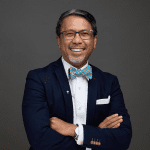




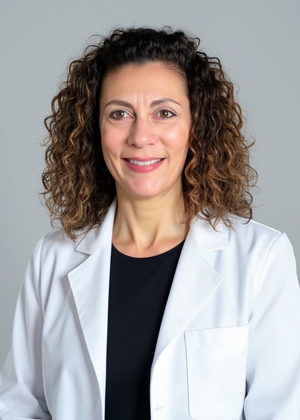


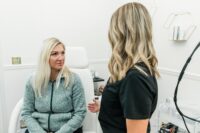



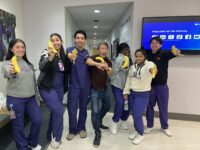
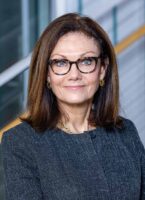







2 Comments. Leave new
Admittedly, I haven’t watched Nurse Unseen yet. Even so, reading this makes me feel like I have a sense of the stories it tells because they’re stories of my own family and friends. Nursing has been ingrained in the Filipino culture; my mother, my sister, and so many of my Filipino friends are nurses. It’s about caring, resilience, and at times, sacrifice that spans all age groups… generations. It almost seems like there is a parallel being drawn between history and the present… the importance of storytelling and advocacy… and really how they go hand in hand. I’m not quite sure why, but this also makes me think about the bamboo ceiling. How we need to break down these barriers that have historically kept many Filipino Americans from assuming leadership roles and greater representation. We owe it to our past and our future so that we don’t repeat the unwanted in the past and provide more opportunities for our future.
Hello Al,
Thank you for reading the essay and for sharing your insights. The closest relative of storytelling is listening. I feel nurses excel in both accounts.
The continued impact of Filipino nurses in the US healthcare system is palpable yet very hard to measure. We shall continue to advocate for our stories to be heard (or seen and read).
Best regards and more power to you!
Fidel